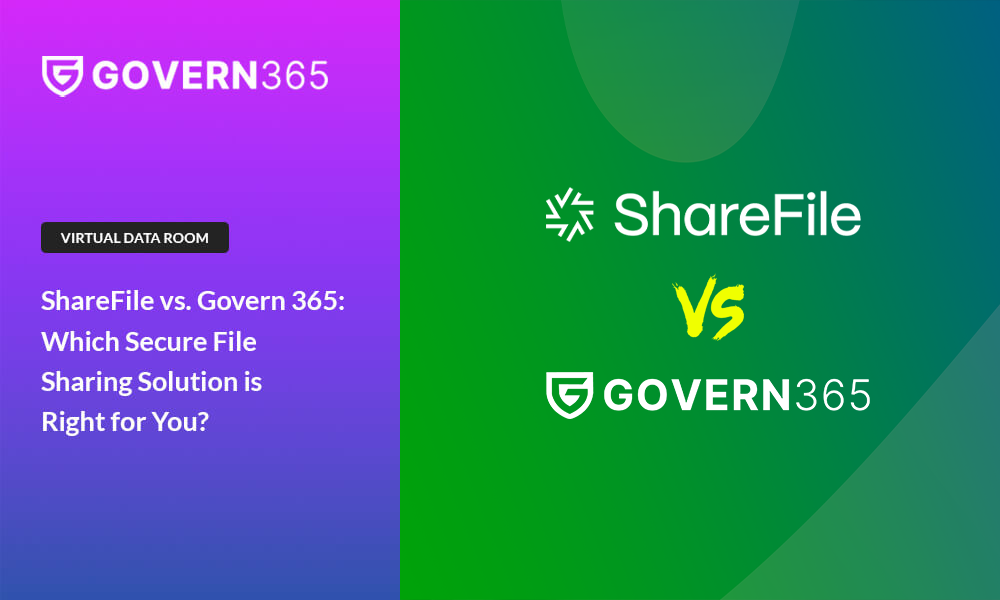STAY CONNECTED
EXPLORE MORE
- Compliance (7)
- Data Room (29)
- Life Science (2)
- Mergers & Acquisition (1)
- News (1)
- Secure Collaboration (10)
- Self Provisioning (3)
- Uncategorized (1)
Overview of Virtual Data Room
Virtual data rooms (VDRs) have become an indispensable tool for private equity firms during the due diligence process. A VDR is an online platform that serves as a centralized repository for confidential documents and information that is shared with potential investors. In this blog post, we will provide an overview of VDRs, discuss the benefits of using a VDR for private equity firms, and outline the process of creating a VDR for private equity firms.
Benefits of Using a VDR for Private Equity Firms
“A virtual data room allows private equity firms to stay on top of their management responsibilities. Virtual data rooms are used to aid the due diligence process during an M&A transaction, loan syndication, or private equity and venture capital transaction. Additionally, virtual data rooms can facilitate the deal process from beginning to end (i.e. Sourcing Deals, Managing/Closing Transactions, Monitoring Investments) Some key areas in which VDRs are most useful for private equity firms are in the consistency and responsiveness of information. For consistency, documents can be updated regularly, providing the vendor full control over data, identifying investment targets and generating valid valuations. For responsiveness, documents are easily accessible allowing assets to be brought or sold whenever required.”
*Source: finservconsulting.com

Download VDR Whitepaper
Stop spending on purchasing expensive Virtual Data Room (VDR) solutions. Use Govern 365 to quickly create Microsoft 365 data rooms or SharePoint online data rooms.
Process of Creating a VDR for Private Equity Firms
Creating a VDR for a private equity firm requires a structured process that involves the establishment of a VDR team, identification of documents to include in the VDR, setting up necessary security protocols that meet your company policies and guidelines, and transferring data to the VDR.
Establishing a VDR Team
The first step in creating a VDR for a private equity firm is to establish a VDR team. The VDR team should consist of individuals with expertise in the information technology, legal, and compliance spaces. The team should be responsible for overseeing the VDR’s set up and maintenance, as well as managing user access and security protocols.
Identifying Documents to Include in the VDR
The next step in creating a VDR for a private equity firm is to identify the documents to include in the VDR. These may include:
- Financial statements: including balance sheets, income statements, cash flow statements, and other financial reports.
- Legal documents: including contracts, leases, licenses, permits, and other legal agreements.
- Intellectual property documents: including patents, trademarks, copyrights, and trade secrets.
- Employee-related documents: including employment contracts, organizational charts, and benefit plans.
- Business plans: including strategic plans, marketing plans, and product development plans.
- Operational documents: including operational manuals, policies, and procedures.
It is important to ensure that all documents are up to date and accurate and that they are organized in a logical and intuitive way.
Setting Up Security Protocols
The third step in creating a VDR for a private equity firm is to set up security protocols to ensure the confidentiality, integrity, and availability of their VDR. Security protocols should include:
- Access control: establishing a system for user authentication and access control, including password management, multi-factor authentication, and content access expiration.
- User Permissions: setting up the appropriate permissions for users to have access to the site that is required for them, giving access to those that need access to the documents and the level of access they will have.
- Data monitoring and reporting: monitoring the activity within the VDR, with the help of audit trails to detect any unauthorized access or suspicious activity and generating reports on the use of the VDR
The VDR team should establish access rights for each user and ensure that they are appropriate for their role and level of access. Additionally, data encryption should be used to protect confidential information from unauthorized access.
Transferring Data to the VDR
The final step in creating a VDR for a private equity firm is to transfer data to the VDR. This can be done manually, by uploading documents to the VDR, or through automated processes that can be integrated with other systems, such as document management systems or enterprise resource planning systems.
Conclusion
Virtual data rooms have grown exponentially over the years, surpassing the $2 trillion market for the first time. In fact, statistics say that revenue generated globally by virtual data rooms is projected to record $3.66 billion in 2027.
*Source: statista.com













